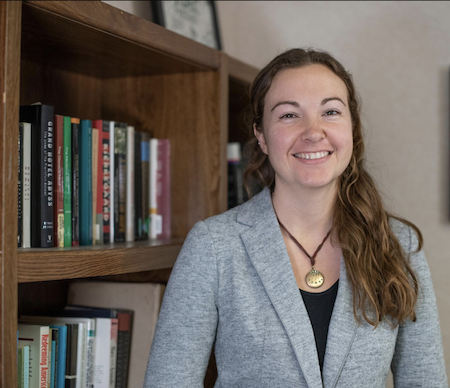
Beverley Franz, Ohio University
An Ohio University researcher has published a new study examining the relationship between systemic racism, residential segregation, and racial/ethnic disparities in COVID-19 deaths in the United States.
The study, published in Ethnicity & Disease, found that death rates among both black and white individuals were higher in areas with more residential segregation, with black individuals’ death rates being almost twice as high.
Berkeley Franz, an associate professor in the Heritage College of Osteopathic Medicine, conducted the study with Ben Parker, senior lecturer in statistics at Brunel University London; Adrienne Milner, senior lecturer in public health at Brunel University London; and Jomills H. Braddock II, professor of sociology at the University of Miami in Florida. Together, the researchers tested the hypothesis that social factors were at the heart of health disparities with COVID.
“We were interested in doing this study because racial and ethnic disparities have been apparent amid COVID-19, and for some Americans, this may have been one of the first times they’ve learned about disparities,” Franz said. “Health disparities are present with almost every illness and have persisted for years, and the gap isn’t closing, especially between black and white Americans. We wanted to understand what was driving those disparities to find better ways to reduce them.”
“Racial disparities are baked into American institutions, whether that is in education systems, health care or neighborhoods: … the more residential segregation there was in a state, the better predictor it was for how many people were dying of COVID and who was dying.”
For the study, Franz and her team analyzed data from every state, looking at systemic racism measures, as well as socioeconomic factors between black and white residents. Using data on deaths through December 2020, they assessed whether state-level systemic racism and residential segregation predicted the probability of COVID-19 deaths among Americans, considering key sociodemographic factors in the process.
Their findings reinforce that the death rate was higher among black individuals because of different social environments rather than physiology or genetics. The authors hypothesize that in segregated neighborhoods, residents are less likely to have access to good quality schools, employment opportunities, health care and other resources.
“Race doesn’t strongly shape if an individual gets infected with COVID-19, as infection rates are similar by race. But race does relate to how severe the disease is and if you die from it,” Franz said. “Racial disparities are baked into American institutions, whether that is in education systems, health care or neighborhoods, and we found that the more residential segregation there was in a state, the better predictor it was for how many people were dying of COVID and who was dying.”
The results of the study demonstrate that residential segregation is associated with negative outcomes for black and white Americans, but disproportionately impacts black residents. The death rate varies considerably by race, with 102.1 of every 100,000 black residents dying of COVID-19 and 73.1 of every 100,000 white residents dying of COVID-19.
According to Franz, the implications of residential segregation and systemic racism are important when looking at COVID mortality rates since social factors are what shaped these deaths, not individual decisions. Differences in socioeconomic factors, like having health insurance and accessible resources, can contribute to the likelihood of recovering from COVID.
“Health disparities will never go away if we don’t get rid of the basic inequalities,” Franz said. “Having an unequal society makes everyone vulnerable and leads to bad outcomes. By addressing these social factors, we can help prevent illness and death. Racial equality benefits society all around.”
The COVID-19 death rate varies considerably by race: 73.1 of every 100,000 white residents have died of COVID-19 vs. 102.1 of every 100,000 black residents.
Franz and her team are currently working on a study looking at vaccination rates over time and if residential segregation predicts whether people are vaccinated. No data have been collected regarding the race of those who have been vaccinated at the local level, however, requiring the researchers to look at state-level trends.
In addition to her role as assistant professor, Frantz is also an Osteopathic Heritage Foundation Ralph S. Licklider, D.O., Endowed Faculty Fellow in Population Health Science.
• • •• • •













